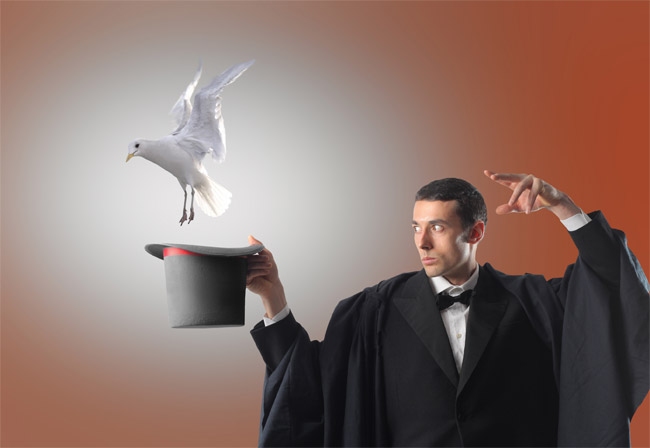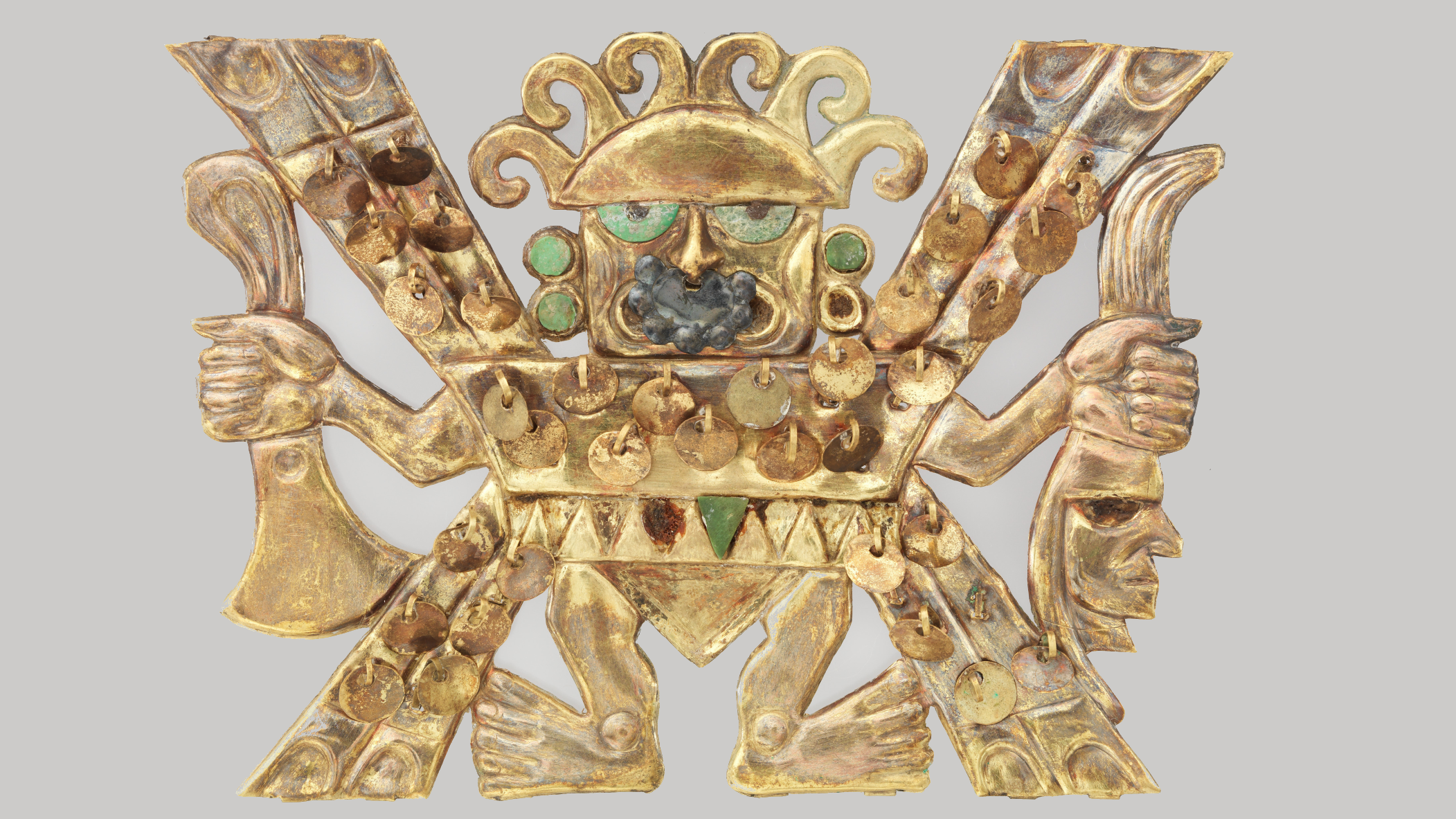Magic and Science Mix in Visual Illusions

Why slight-of-hand magic tricks fool (most of) us could help researchers develop real-world applications in military tactics, marketing and sports. In a recent study, researchers found that the way a magician moves his hand determines where his audience looks.
"Not only is this discovery important for magicians, but the knowledge that curved motion attracts attention differently from straight motion could have wide-reaching implications — for example, in predator-prey evasion techniques in the natural world, military tactics, sports strategies and marketing," study researcher Susana Martinez-Conde, of the Barrow Neurological Institute, said in a statement.
The researchers worked with professional magician Apollo Robbins, who approached them with his idea that audience members directed their attention differently depending on the type of hand motion used.
Robbins believed that if he moved his hand in a straight line while performing a trick the audience would focus on the beginning and end points of the motion, but not in between. In contrast, he believed if he moved his hand in a curved motion the audience would follow his hand's trajectory from beginning to end.
By studying the eye movements of individuals as they watched Robbins perform, Barrow researchers confirmed Robbins' theory. Perhaps more importantly, they also found that the different types of hand motion triggered two different types of eye movement.
The researchers discovered that curved motion engaged smooth pursuit eye movements (in which the eye follows a moving object smoothly), whereas straight motion led to saccadic eye movements (in which the eye jumps from one point of interest to another).
In another study, the researchers worked with professional magician Mac King to investigate magicians' use of social cues — like the position of their gaze — to misdirect observers.
Get the world’s most fascinating discoveries delivered straight to your inbox.
They studied a popular coin-vanishing trick, in which King tosses a coin up and down in his right hand before "tossing" it to his left hand, where it subsequently disappears. In reality, the magician only simulates tossing the coin to the left hand, an implied motion that essentially tricks the neurons into responding as they would have if the coin had actually been thrown.
The researchers discovered that social misdirection does not always help magic. By presenting two different videos of King — one in which the audience could see his face and another in which his face was hidden — they found that social misdirection did not play a role in this particular trick.
"We wondered if the observer's perception of magic was going to be different if they could see the magician's head and eye position. To our surprise, it didn't matter," Martinez-Conde said. "This indicates that social misdirection in magic is more complicated than previously believed, and not necessary for the perception of all magic tricks."
The studies were published online November 21 and September 29, 2011 in the journal Frontiers in Human Neuroscience, and the research detailed in a news release today, May 22. It could be the first discovery of its kind initiated by a magician, rather than a scientist.

